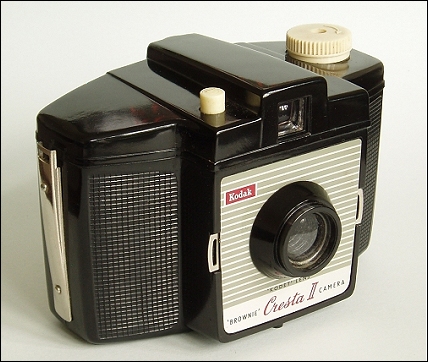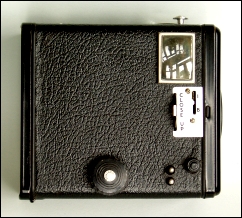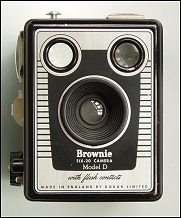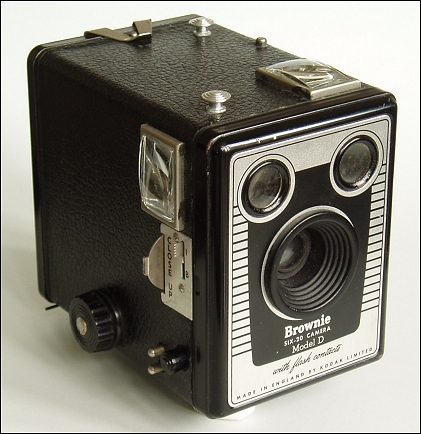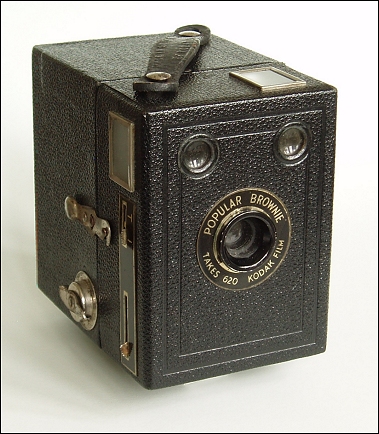Manufactured
between 1937 and 1942 this is one of the few cameras produced in Britain during
the second world war. The case is a utilitarian composite of cardboard and
leatherette covering. The front section is made of wood and houses a fixed
aperture meniscus lens and two reflex viewfinders. This front section is
removed to reveal a metal chassis for easy film loading.
The simple shutter
offers a single shutter speed of roughly 1/30th sec. together with a 'T'
setting. Like many roll film cameras of this vintage it uses type 620
film.
Manufactured 1955
- 1958. After WWII the British public were able to enjoy significant
amounts of leisure and holiday time at the emergence of a post-war economic
boom. This cheap, mass produced design satisfied their
needs for a
simple camera needing the minimum of manipulation prior to taking a
photograph. The black moulded plastic body supports a small f14 fixed
focus lens and a single shutter speed of 1/40th second. Picture taking
was made easy with a simple eye-level direct optical viewfinder and well
designed shutter release and wind-on controls. A close-up focus lens
and yellow cloud filter are mounted on a right/left 'shuttle' behind the
lens. The inclusion of the yellow filter suggests that the camera was
still designed primarily for black and white film when colour film was not
in common use by the general public.
The use of the
large 120 film format meant that the final print quality would be reasonable
whatever the skill of the photographer, and the small lens aperture
guaranteed that most of the subject would be in focus.
This camera was
also available with a flash sync socket although on this particular example
it is absent. The 'Cresta' logo suggests that it was designed to be
used at the seaside.
